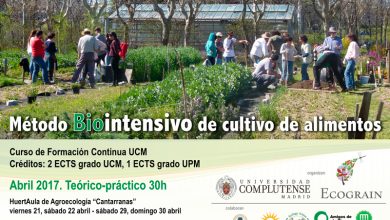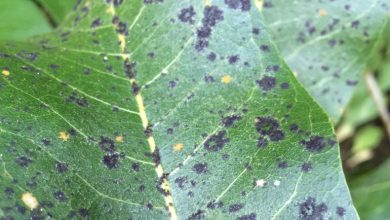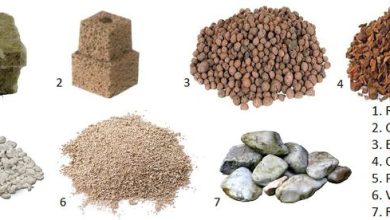5 medicinal plants and their uses

Some plants, apart from offering a unique aroma, have active ingredients that can be used to treat some ailments. Precisely because of their multiple properties and attributes, many people want to enjoy these plants in their own home , either outdoors (orchard or garden) or in pots.
If you also want to know more about them, you have reached the indicated place, in Friends of Gardening we will guide you to learn about the cultivation of aromatic and medicinal plants, but we will also explain what each one of them is for. Discover a list with 5 aromatic and medicinal indoor plants accompanied by their names and photographs.
What are medicinal plants?
The medicinal plants are those with «active ingredients» that can treat certain health problems or are used to develop drugs or natural therapeutic remedies .
In this group of plants we also find plants that are appreciated for their aroma or flavor, and that is that medicinal and aromatic plants can also be used to make perfumes, soaps and are even perfect for culinary use, seasoning our dishes.
The vast majority of these plants have been used for centuries and the main advantage they represent is that they can be grown both in pots and planted directly in the soil of our orchard or garden. This time we will show you 5 medicinal plants perfect for indoors .
5 medicinal plants with names and photographs
1. Rosemary ( Rosmarinus officinalis )
Rosemary is an evergreen shrub that can reach 2 meters in height and has blue flowers , although there are varieties grown in other colors. It is common in the Mediterranean area, where it usually grows in rocky areas, in addition, it is in the same family as other medicinal or aromatic plants such as basil or mint. The rosemary stem is woody and its leaves are small and pointed, dark green, which give off a fantastic aroma.
Rosemary care
Rosemary is a very resistant and easy-to-care aromatic plant . Although generally considered an outdoor plant, it can be adapted to living indoors and can be potted or planted directly into the ground. Among the care of potted rosemary we can highlight that it is a plant that will need to receive the sun and a rather dry substrate, so watering will be moderate. To reproduce rosemary we can use a very simple process that consists of making rosemary cuttings in water .
Rosemary properties
Rosemary is highly appreciated in gastronomy for its intense and pleasant aroma. It should be noted that it is advisable to use a small amount, since its flavor is intense , but perfect for seasoning meats, soups or stews, likewise, we can flavor the olive oil with it, placing a sprig inside.
Rosemary also stands out for its medicinal properties , since its oil has a multitude of active principles. It is used in the form of an infusion and is used mainly for gastric and liver problems and has stimulating, diuretic and disinfectant properties.
2. Basil ( Ocimum basilicum )
Basil is probably one of the most popular aromatic plants. There are several types and depending on which one you choose you can enjoy some properties or others. This small annual plant reaches a maximum of 30 or 50 centimeters and its main virtue is that its large and green leaves, tasty and edible, give off a great aroma that resembles the smell of citrus. Its flowers are small and white, and are grouped in spikes. Additionally, basil is considered to be a powerful mosquito repellent .
Basil care
The care basil are relatively simple. It needs to be grown in a sunny place and it will not matter if it is planted in a pot or in the soil of our orchard or garden, we will simply take into account that it does not tolerate low temperatures, so we should plant it in a pot preferably if we live in an area very cold.
Basil does not have a great demand about the type of substrate, but it is preferable that we plant it in a light and well-fertilized soil . We will have to monitor the drainage, since it is a plant that requires copious irrigation, so that will be especially important.
It can also be affected by snail pests , but remember that it is better to use products that do not harm the rest of the animals since the chemical insecticide of snails affects other species, and it is very common for dogs, cats and children to ingest it. that could easily cause their death, so we recommend that you always use insecticides or natural repellants .
Basil properties
Basil is one of the most appreciated aromatic plants in the kitchen since its great perfume and its fantastic flavor are perfect for seasoning food. It is used both fresh and dry and is ideal to combine with pasta and salads. It has beneficial properties for our health, since it has antibacterial, antispasmodic, anti-inflammatory, sedative effects and improves digestion.
3. Valerian ( Valeriana offcinalis )
Valerian is a vivacious, medicinal and aromatic plant , native to Europe and Asia. It can reach a meter in height and its very characteristic flowers are white. It is ideal for potting , but can also be grown in a vegetable garden or small garden.
Valerian care
Valerian is a plant of temperate climates and although it endures cold temperatures, it is convenient that these are not very common, since they will cause damage to the plant. It adapts to direct sun and semi-shaded places. Regarding substrate, valerian prefers soils with organic matter and a good degree of humidity. We will have to water the valerian moderately, since it does not tolerate either the excess or the lack of water, therefore in warmer times we will increase the irrigation.
Valerian properties
Valerian is a medicinal and aromatic plant that has sedative and calming effects . It is used in some drugs but can be consumed as an infusion.
4. Mint ( Mentha )
Mint is another of the most popular medicinal and aromatic plants. Who has not ever eaten a mint candy or gum? It is a perennial plant and its stems are usually about 6 years old, also producing a good amount of leaves.
Mint care
Mint, like other medicinal and aromatic plants of the same family, is very undemanding when it comes to caring for it. It is a plant that needs to be located in a semi-shady place, but it adapts to living in a pot or planted directly in the ground. Of course, we must be careful when placing it in a pot or garden with other plants, as it tends to invade the plants that it has next to it . It is a plant that tends to get used to almost any climate and can resist temperatures down to -10ºC. Mint adapts to a large number of substrates, but prefers those where organic matter and moisture abound.
Properties of mint
Peppermint has various properties: on the one hand it will help us to alleviate the symptoms of heavy digestion and on the other it has an anti-flu and anti-mucolytic function, since it helps to decongest the respiratory tract and can be taken as an infusion or as an essential oil. Given its incredible aroma and flavor, mint is present in sweet drinks and in some dishes.
5. Lavender ( Lavandula )
Lavender, like rosemary, is an aromatic plant from the Mediterranean area. It has a woody base and long green stems. Its leaves are narrow and its purple flower gives off a pleasant smell. It can reach one meter in height and we can find different varieties. It is one of the most popular aromatic plants .
Lavender care
As far as care is concerned, lavender is an aromatic plant with little requirement. We must provide it with a calcareous or sandy substrate and moderate humidity and irrigation, since with an excess of watering we can cause fungal problems quite easily. We will have to prune the lavender once a year , after flowering, cutting until leaving about 20 centimeters of stem. Flowering is usually in the month of August.
Lavender properties
Lavender is a medicinal plant with multiple properties. It helps alleviate certain conditions, such as high blood pressure and rheumatism , but it also has anti- inflammatory , sedative, and helps fight infection. Apart from its medicinal use, we can use lavender to make air fresheners that will help us to be more relaxed .
Now you know 5 medicinal plants and their uses! Also discover in Friends of Gardening 10 plants for a shady garden .










